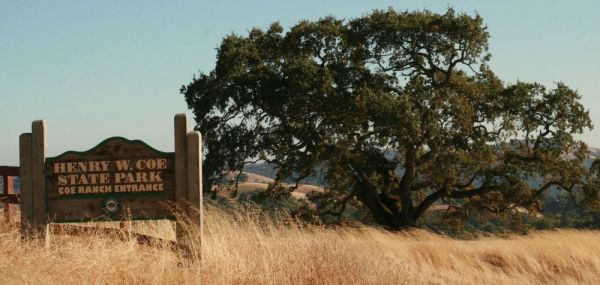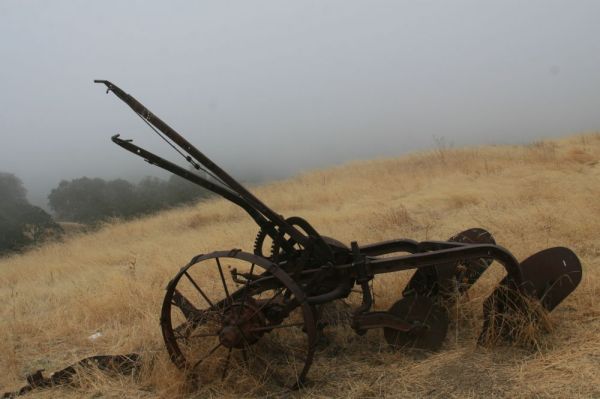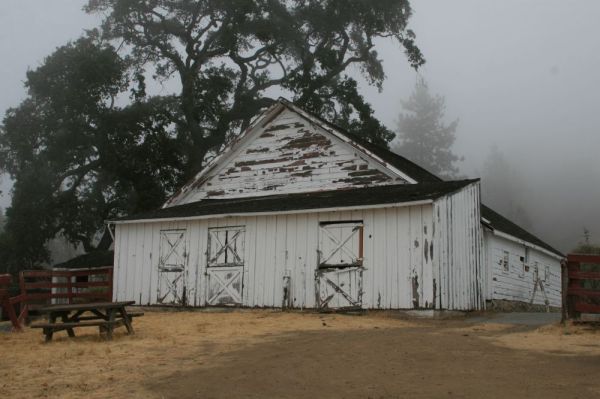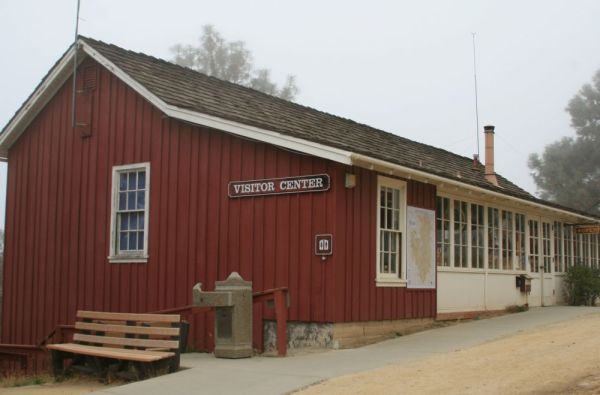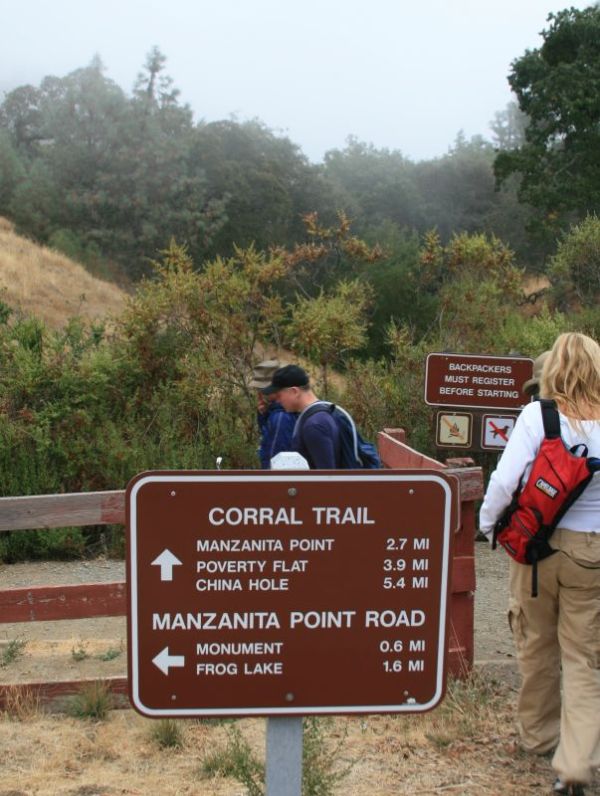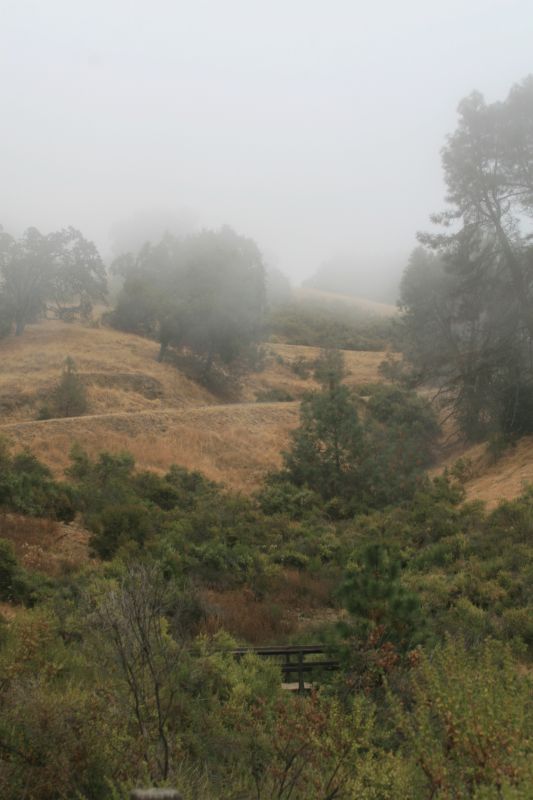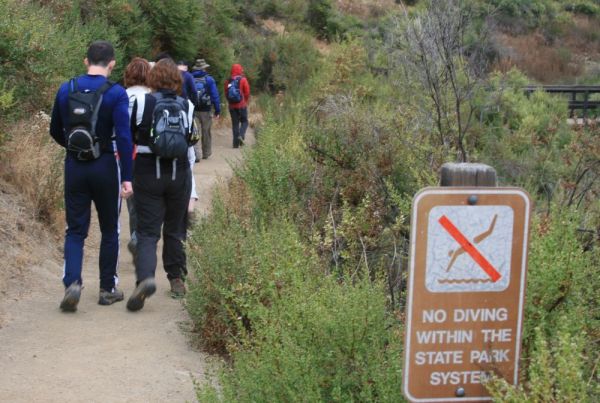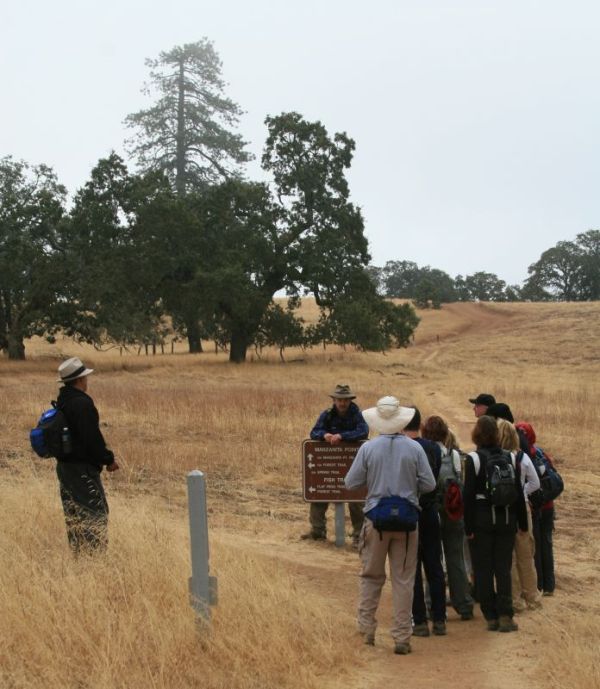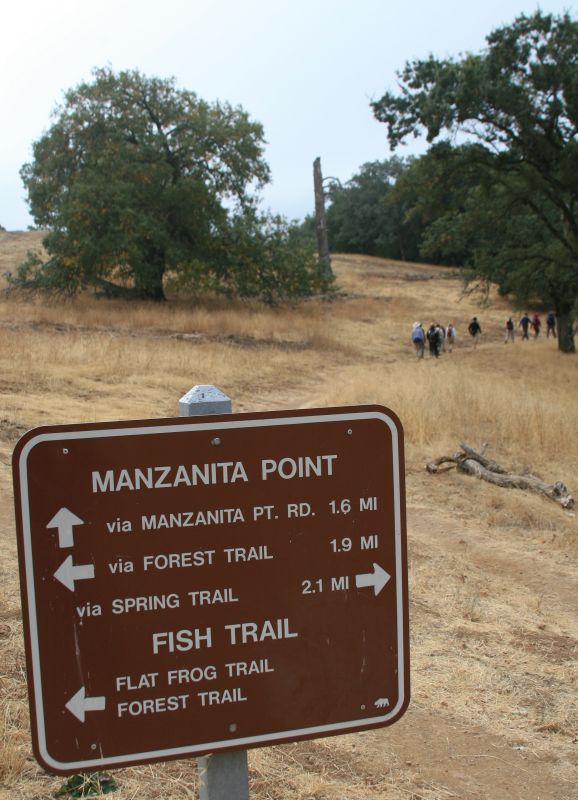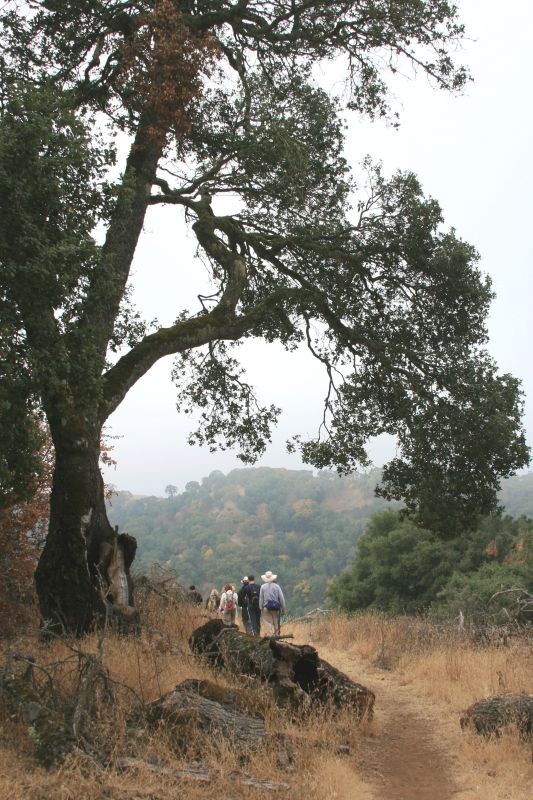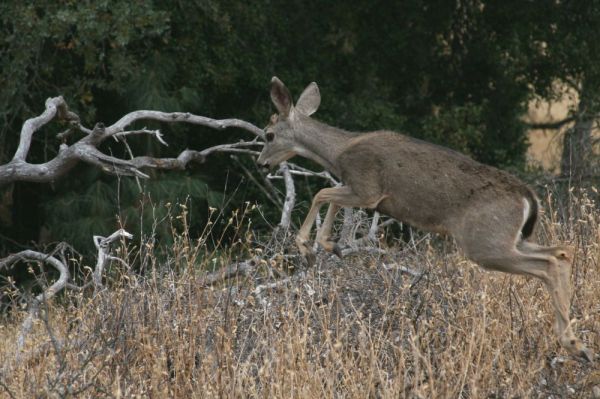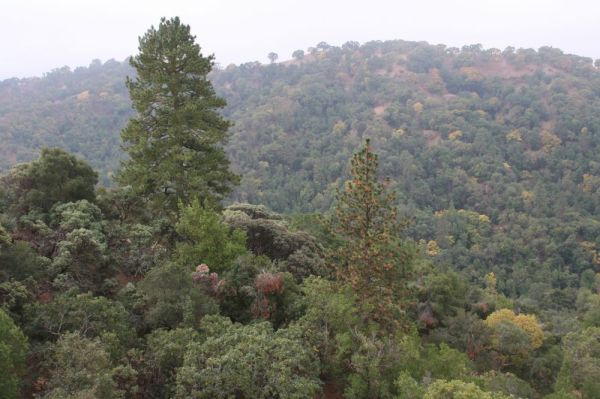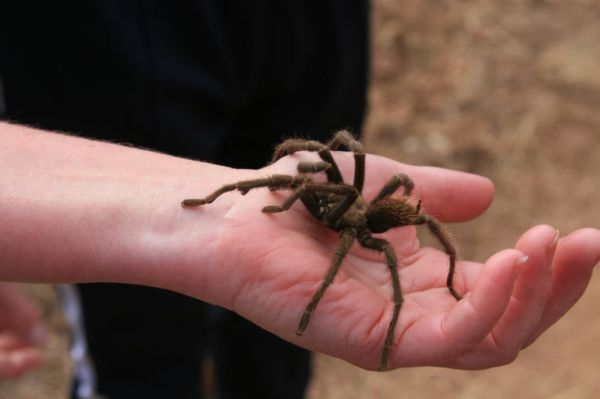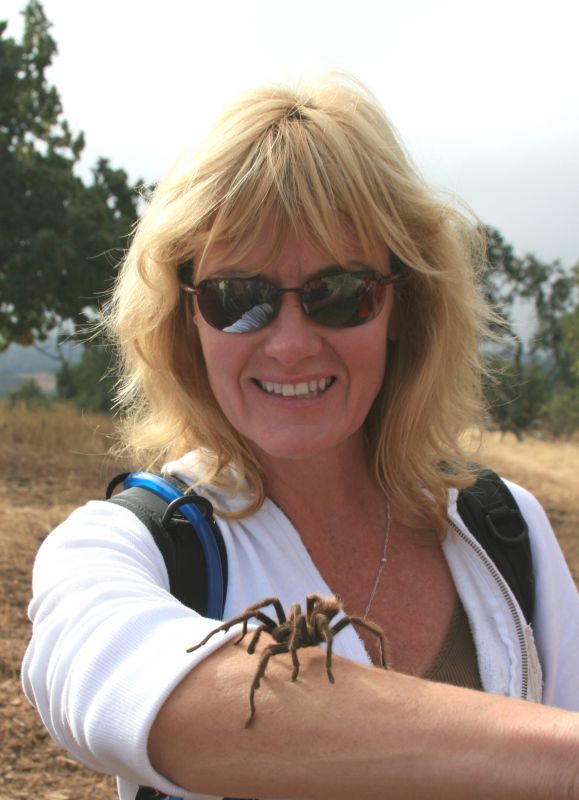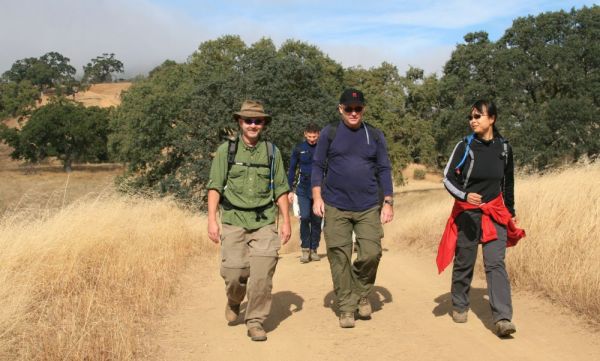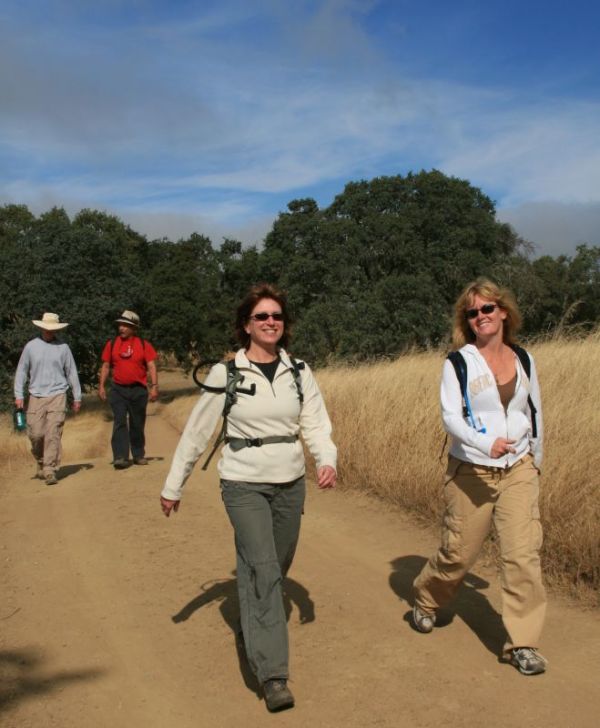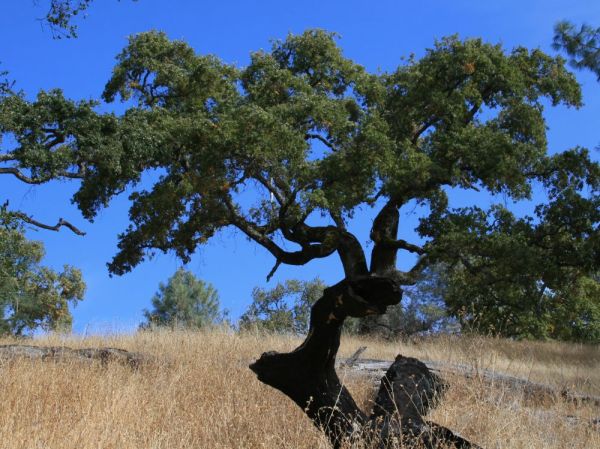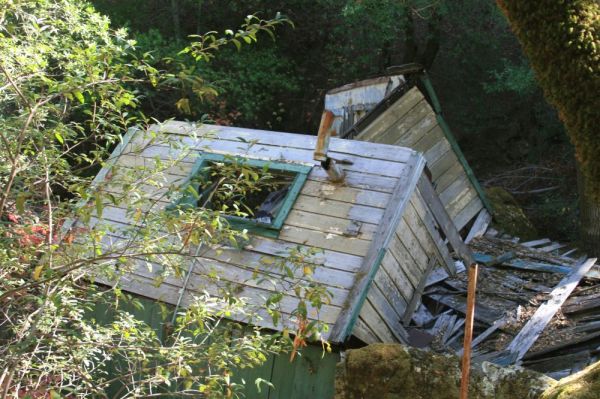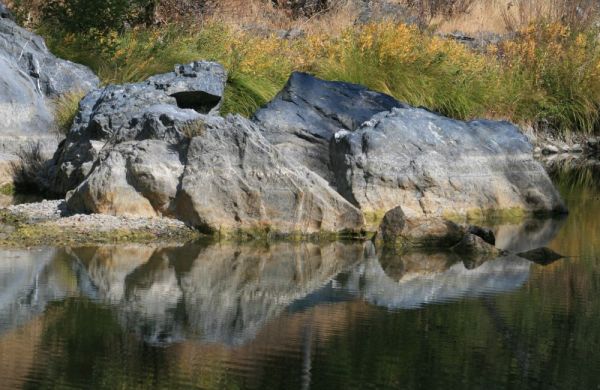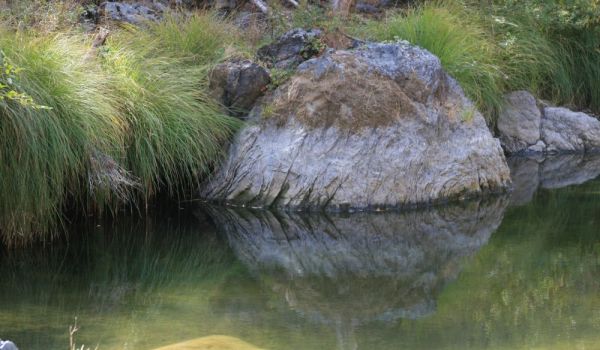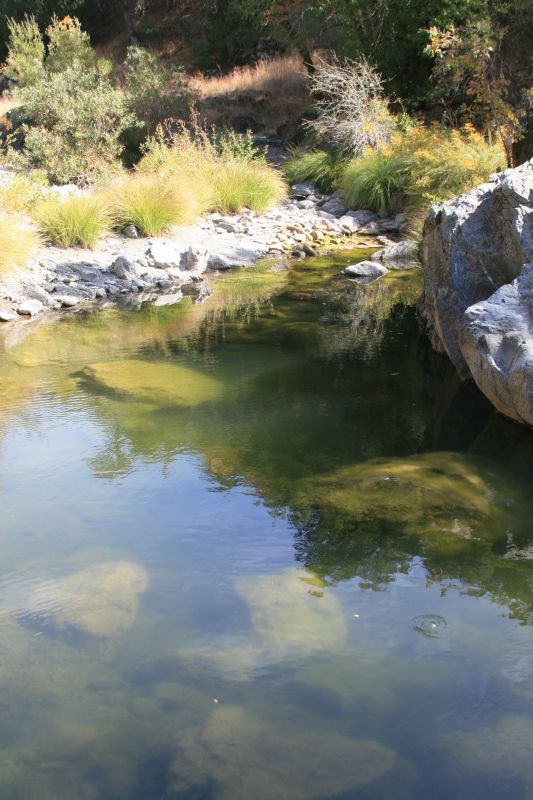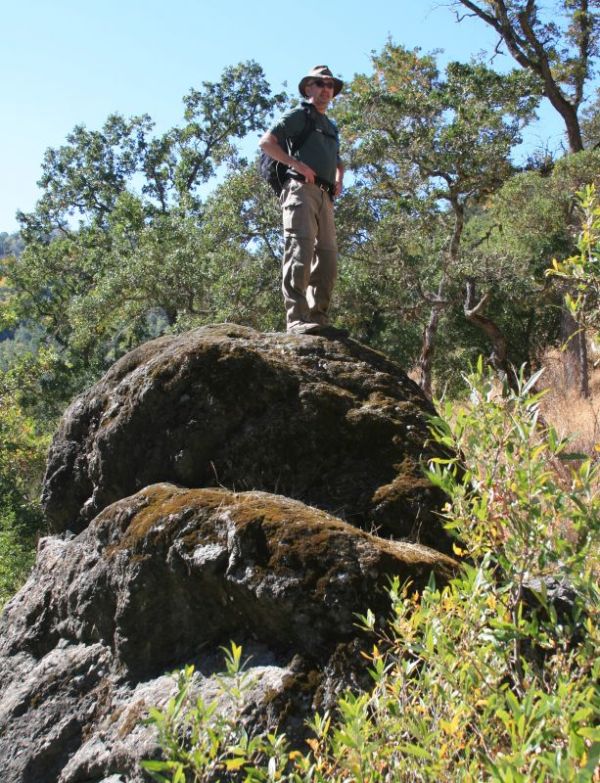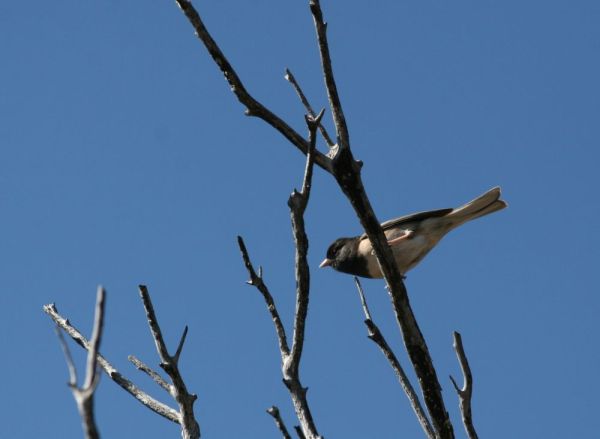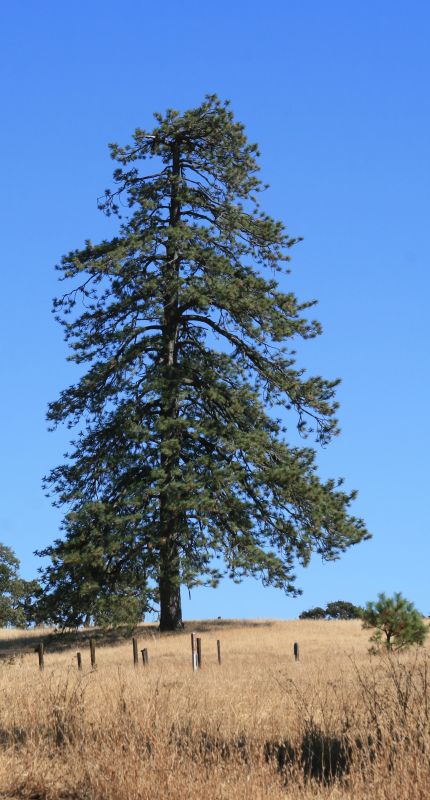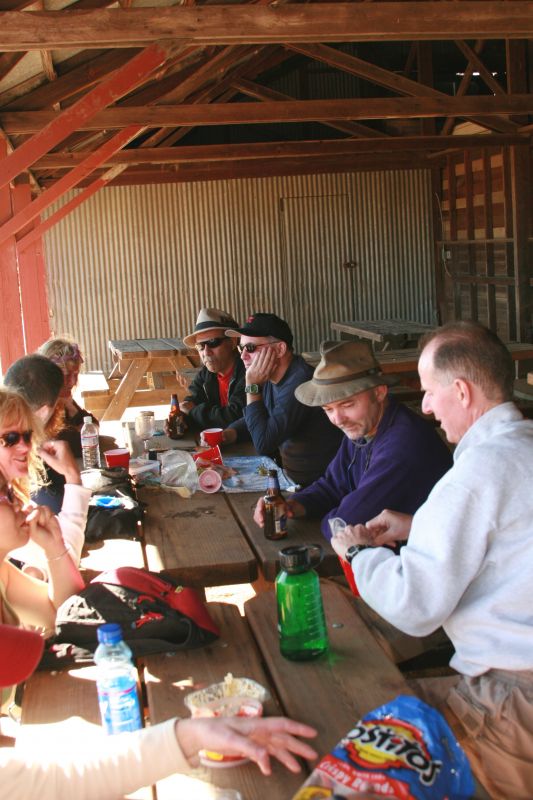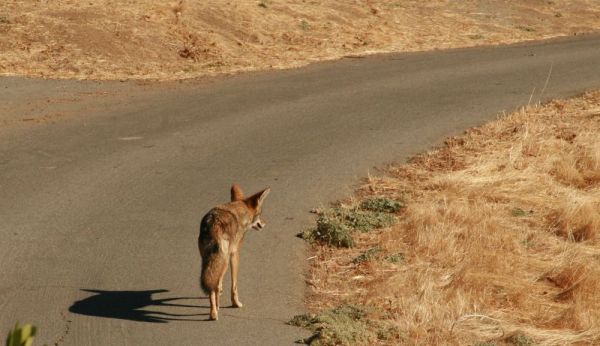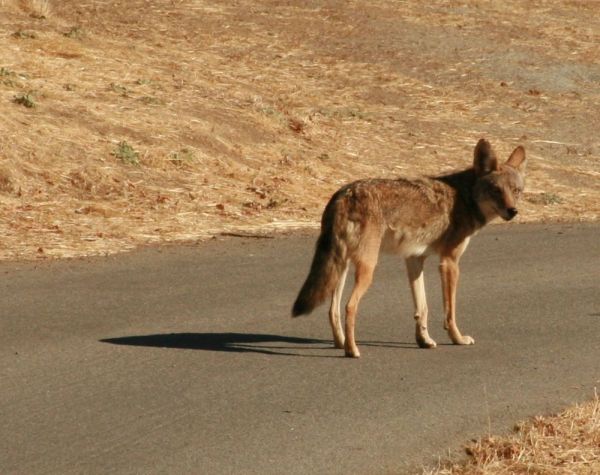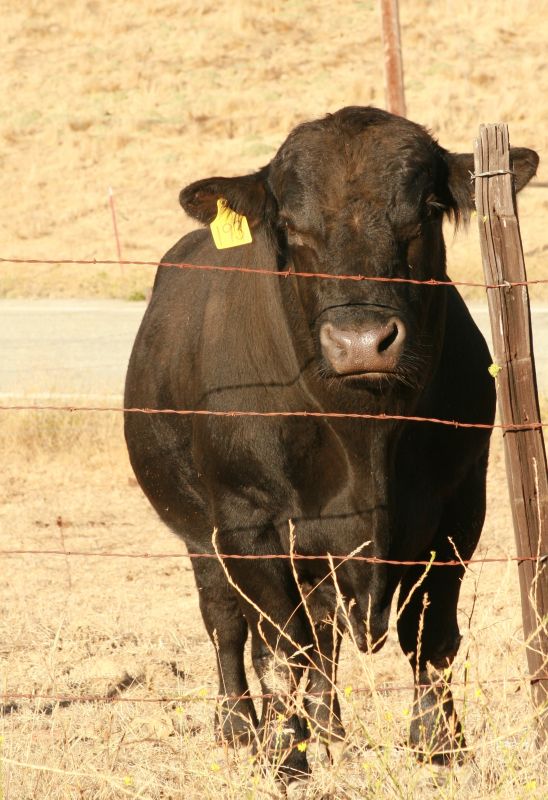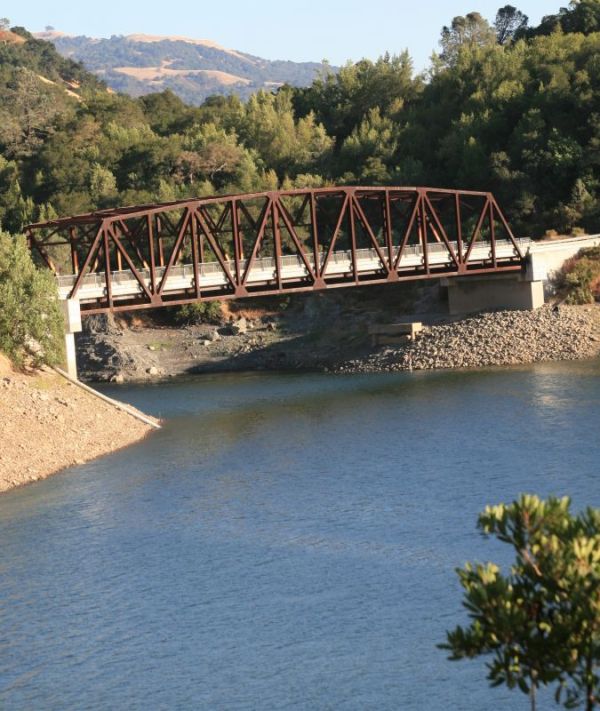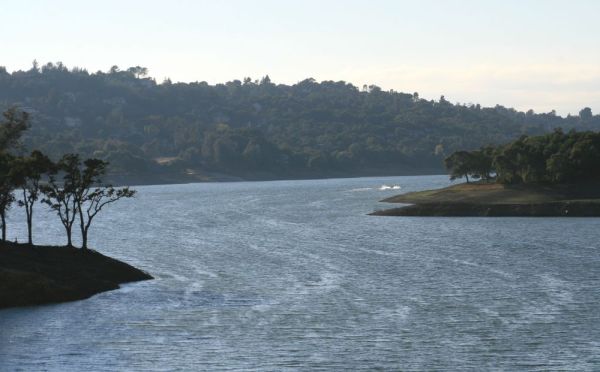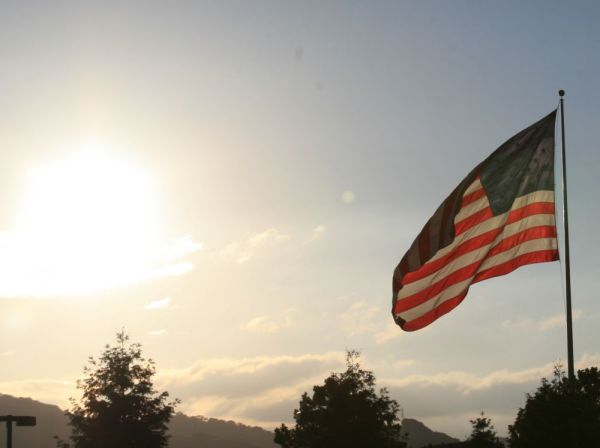
From Briones Peak, a view to the north
of cattle ponds and Carquinez Straits.
The day after a snowstorm, folks who ski tend to reference sunny, clear-blue skies as evidence of a bluebird day. If I can extend that term to include my hiking adventures, then I’ve recently enjoyed two bluebird days – one at Big Basin Redwoods back on February 24th, and the other this past Sunday at Briones Regional Park.
Quite fortuitously, each of these hikes had occasion to occur two days after moderate seasonal rainfall late in the week, each rain quickly giving way to clear weather and allowing adequate drainage and drying of the trail surface. By the time I’d arrived at their trailheads, the soils at each park had yielded a near-perfect tack, comfortable underfoot and presenting only minor incidence of loose footing in the shadowed low spots.

Red Maids, Calandrinia ciliata, were a common sight on the sunny saddle between Briones and Mott peaks.
It had been another in a series of long weeks at work, and I first had to get past the frustrations of deciphering dense Engineerese and an all-too-tall pile of workload. A good night’s sleep and a few miles of road between my Sunnyvale home and the hills of Orinda seemed to carve away the vestiges of these vexations, but once I stepped out of my truck at Briones Park’s Bear Creek Trailhead, breathed the cool green hills, laced my boots and embraced a friend, all care quickly melted into a serene pace and welcome chatter.
Within a few steps, my week had suddenly and gratefully distilled into a decoction of carpe the damn bluebird diem.
We strode out on a counterclockwise loop, Angela and I, first walking a trail east along Bear Creek before angling right along Homestead Valley Trail. We encountered the softest earth along these lower flats which, though pocked with cow sign, were easily navigable, yet too laden with moisture to support wildflower displays. After perhaps a mile, our route took us left onto Briones Crest Trail and into hills rampant with coast live oak, yet studded here and there with madrone, bay laurel and, as we climbed higher to a junction with Table Top Trail, a scattering of surprisingly tall, quickly-growing buttercups.

Mt. Diablo glows in the morning haze.
Eventually we emerged from the trees onto an open ridge below Briones Peak and enjoyed our first glimpse of the surrounding countryside. Mt. Diablo shimmered beyond us to the east above the town of Walnut Creek, its twin peaks prominent on the morning skyline; to the west, we could easily recognize the unmistakable contours of Mt. Tamalpais.
We sauntered on, gaining Briones Peak, then continued northwest, following the crest of the ridge toward Mott Peak. The land undulated away to the north below us, offering a dazzling view of the Carquinez Straits, the Mayacamas Ridge in Sonoma County beyond and, just below us, the twin Sindicich lagoons.
Up until now we had generally followed the main trails, which had in large part been wide ranch road. But having seen that the trail we were on skirted the high point of the park, Mott Peak, I eschewed pretense and instead decided to follow a fenceline cow trail directly upslope to its summit. Mild protestations from Angela elicited a brief discussion of rhythmic breathing technique and, before we were scarcely aware of it, we were communing with the meadowlarks and ravens atop the peak, and hungrily unwrapping our sandwiches.

The Herrick Red from Conn Creek Winery: well-structured, fruit-forward, and absolutely delicious.
At 1,424 feet, the view from Mott Peak is nothing if not commanding, and so we sat and gazed awhile at the splendor surrounding us, gratefully chowing down and occasionally commanding sips from a bottle of Herrick Red from Conn Creek Winery, a classic yet affordable Bordeaux-style wine sourced and blended from Cabernet Sauvignon and Syrah grapes grown in Napa Valley’s Rutherford district.
On such a comfortable, sun-warm day, it was easy to accept the notion that we should simply linger in the grass among the Red Maids, allow the gentle Bay breeze to caress us, and let our thoughts wander in unbroken reverie, but our feet eventually ruled the moment, given to notions of wandering themselves. And so we ambled downhill, back along Mott Peak Trail to Black Oak Trail which, though it descends sharply enough to wisely warrant a counterclockwise circumnavigation of the Briones Crest, quickly returned us to Old Briones Road and our cars.
If you’re going to Briones Regional Park
The wildflowers are just beginning to bloom, so now through mid-May is a great time to explore the magic of Briones Regional Park. The majority of the park’s over 6,000 acres of open space is unshaded and open to the elements, so be sure to wear sunscreen, even a wide-brimmed hat. The Briones Regional Park website a includes a downloadable trail map; parking at the Briones Park office and the Alhambra, Bear Creek, Lafayette Ridge and Reliez Valley staging areas is $3 and is open from 8 a.m. to sunset.
————————— ♦ —————————
Have you hiked Briones Regional Park?
If so, did you see any wildflowers or enjoy the view from Mott Peak?
————————— ♦ —————————
Related articles
- Saturday, March 9th: Loop of the Briones Crest, Briones Regional Park (winehiker.wordpress.com)
- Birding Briones Regional Park 2/2/13 (naturalhistorywanderings.com)
- A hike in Briones…. a beautiful day for a walk (pocketperspectives.wordpress.com)


